Karung Guni Gobi & Streamlining Crinoids
 May 2, 2013
May 2, 2013
After a week of stormy weather, the sky finally cleared up for our Labour Day dive! Despite it not having rained the night before, the limited 2-3 meter visibility we had today was some indication of the effect of April storms on our reef. Yet reef life appeared unfazed. We entered the water as the tide was picking up and a slight current coming through. This brought some crinoids out and corals had their polyp tentacles extended out.
It looks like a centipede, but these are arms of a crinoid! This one was a beautiful pink and orange in color. How unique! Too bad it’s still half hiding and we can’t get a better look at it.
While some of the bigger crinoids could spread their arms out to take in all the good stuff that’s drifting by, I came across this little crinoid that had streamlined itself against a whip coral. Maybe its little legs aren’t quite sufficient to keep a secure hold onto to the coral.
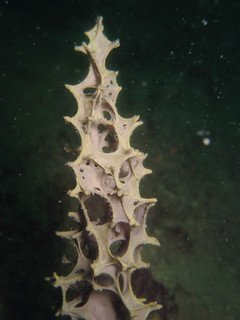
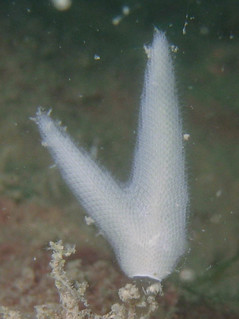
There were also spikey branching sponges in blue, and blade-like sponges on stems that look like plants but upon closer inspection, the delicate cell structure tells us otherwise. Sponges are like other animals in that they are multicellular, heterotrophic, lack cell walls and produce sperm cells. Unlike other animals, they lack true tissues and organs, and have no body symmetry. The shapes of their bodies are adapted for maximal efficiency of water flow through the central cavity, where it deposits nutrients, and leaves through a hole called the osculum. [1]
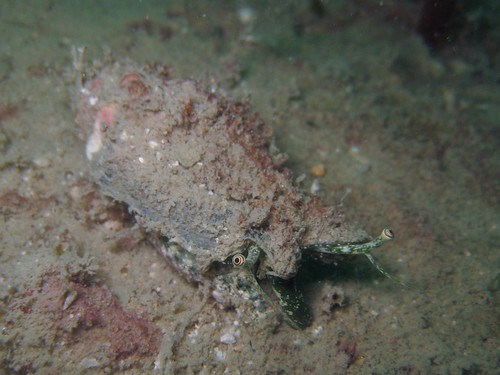
A pearl conch (Strombus turturella), also known locally as gong-gong, remains invisible on the seabed if not for its pair of brightly-coloured eyes!
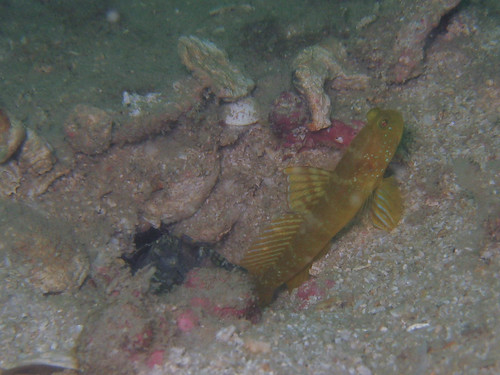
This yellow Shrimp goby has a nice big Pistol shrimp for a butler. As is evident, this shrimp is working very hard to keep the entrance to their burrow spic and span, and inconspicuous.

This neutral-coloured, karung guni Shrimp goby however, has a burrow entrance lined with man made scrap material. It’s just a little bit messy, and does make its burrow rather conspicuous, but a resourceful effort nonetheless!
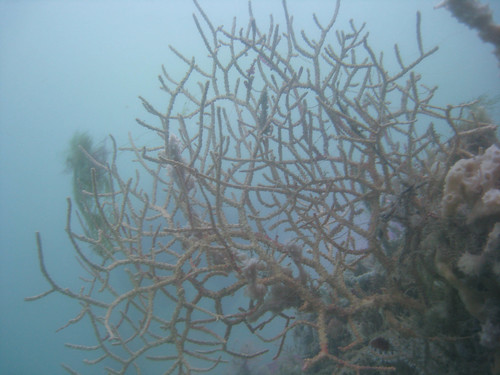
Some man made debris on the reef can never do any good. This coral is completely entangled with mono filament fishing line. Pulau Hantu attracts many fishing enthusiasts. Many are not aware of the substrate beneath the water and often cast their lines too deep and too heavy, causing their lines to get snagged by the coral below. Once their lines are stuck, they cut off their lines and leave it to remain entangled in the reef. Currents and drifting debris can get caught in these lines, which add weight to the line, and can pull entire coral colonies off the reef. A little line can make a big bad difference. If you go fishing, please be try to research your location and use appropriate fishing equipment.

Pei Min found this young seahorse hiding amongst the branching sponges. As you can see, the entire sponge is entangled with fishing line. The seahorse which swims slowly and uses its prehensile tail to navigate the reef may be able to maneuver around these fishing lines, but some larger, faster swimming fish, might not be so lucky.
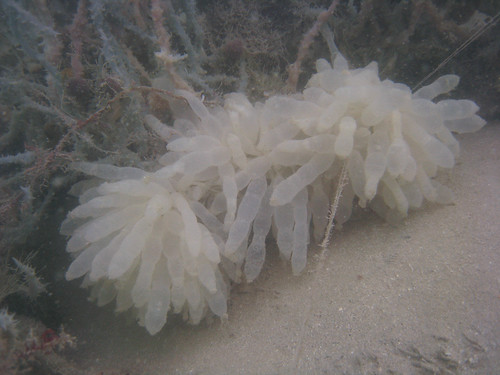
We found a nest full of squid eggs! I think the little squid have already hatched because the egg sacs seemed empty.

There was a little Jorunna funebris nudibranch that was creeping over the empty egg sacs onto a branching sponge nearby.
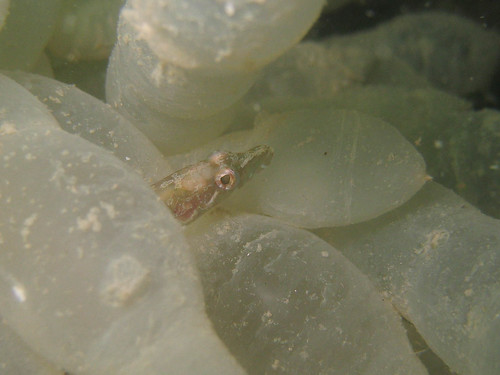
I also found a young Carpet eel-blenny hiding amongst the eggs.
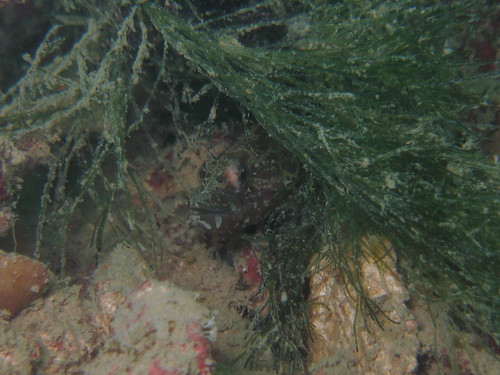
I found a larger one hiding amongst the seaweed.
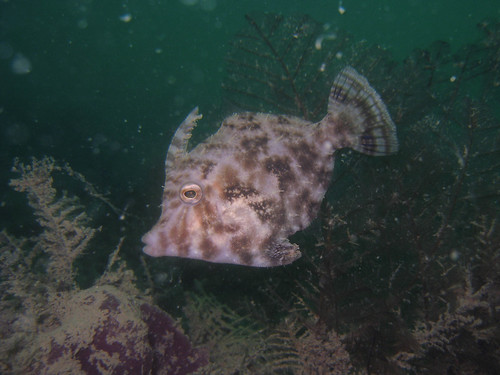

Filefish can change their body color to match their environment!
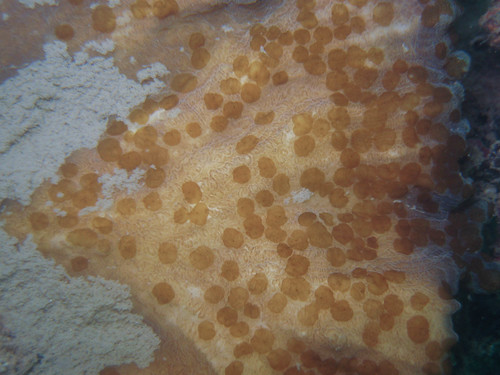
And little Acoel flatworms crawling on the surface of a Pectinia coral.
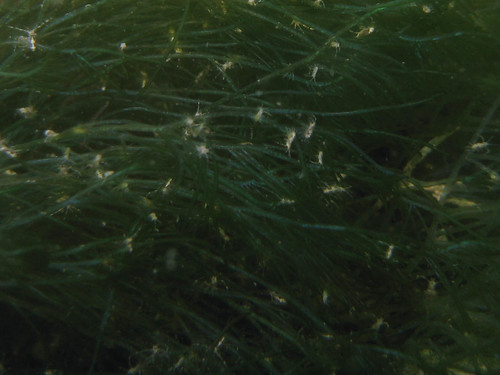
Other little things on the reef were these tiny crustaceans clinging onto filaments of cyanobacteria.

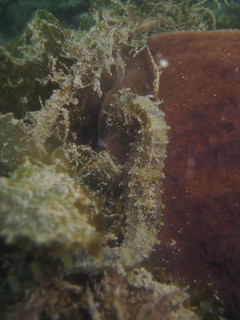
There were more seahorses! On the left, a male, and on the right, a female.

This female was found with the male above. While I was taking pictures, they moved apart. I wonder if they were about to mate. The other female was found about a half meter away from the pair.
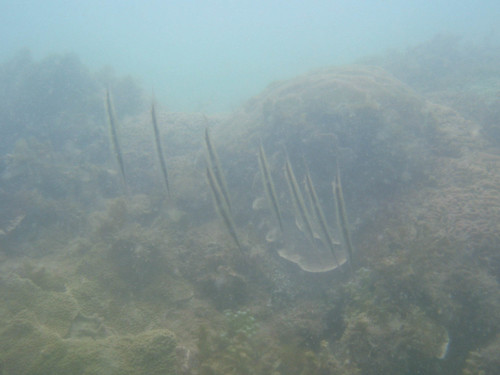
Razorfish drift along the reef crest, mimicking blades of seagrass.
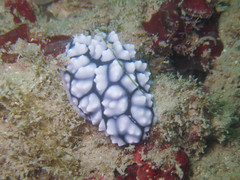
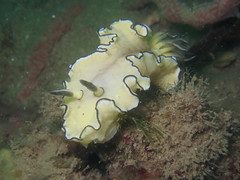
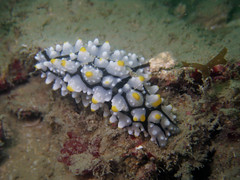
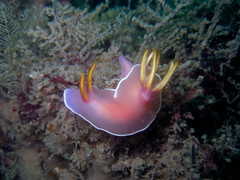
As usual there were loads of nudibranchs!

Here’s a Peterolina nudibranch with a very tiny crinoid!
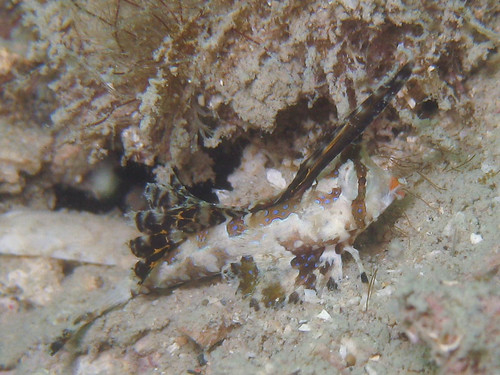
Here’s something really cool we found! A Fingered dragonet (Dactylopus dactylopus). Despite its bright colours, these fish are well adapted to living in sandy, mucky, seabed habitats. They move slowly to avoid detection, but can skip away real quick if they feel threatened.
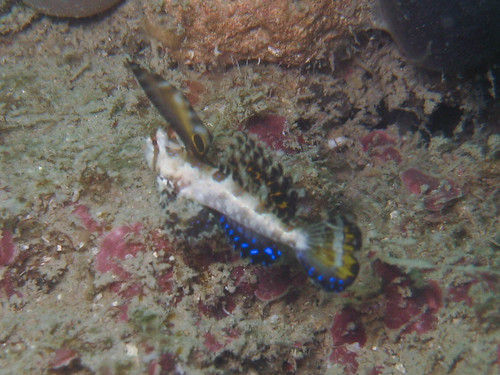
I didn’t manage to get a very good shot of its full colours when it has its fins extended, but here’s to give you an idea!

We wrapped up the dive with a school of Silver moonies…

… and a school of Yellow-tail barracuda.
To see all the photos from this dive, visit the Gallery!
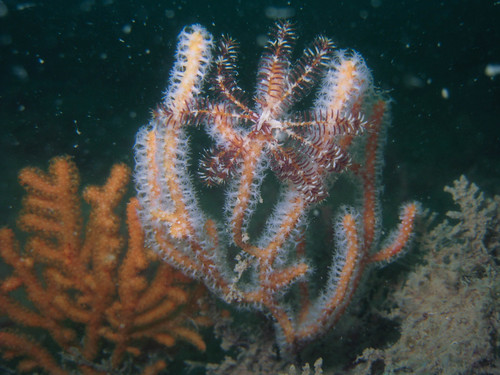

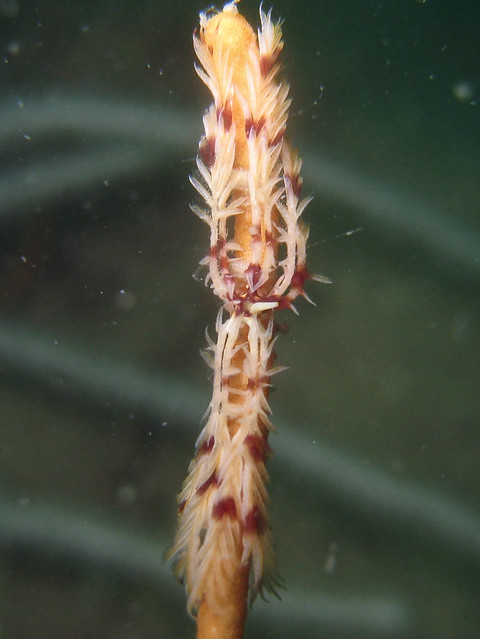

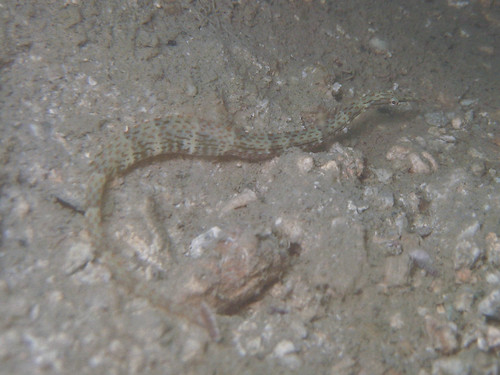
 Posted in
Posted in 



 content rss
content rss
COMMENTS